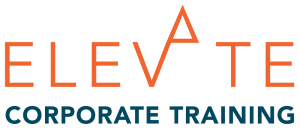When you’re not ready to make a decision, followup calls or emails from salespeople can be a nuisance. That’s when those calls likely go to voice mail and emails get deleted.
It’s too easy for people to avoid your calls these days. It’s not that they aren’t interested in what you have to say, it’s just they are too busy or aren’t ready to move forward. However, when your job is to sell, you have to find the best ways to get past these obstacles. So, how do you get through the defences and make sure your calls won’t annoy prospects? Here are some of the best ways to follow up with customers.
Before You Connect
Before you make sales follow up calls, make sure you have a solid reason to connect. You’re not just doing a follow up email or follow up sales call to touch base or check and see how things are, you want to have a VBR (Valid Business Reason) for making contact. Consider where the prospect is in the buying journey and develop a VBR that provides value to the potential customer. Just calling to “check in” wastes everyone’s time.
It also helps to practice. Sports team practice fundamentals before they hit the field. Actors rehearse before they go in front of a live audience. Whether you have a follow up sales call script, or create a game plan for the call or email, it’s important to rehearse.
How To Follow up: Make The Connection
When you have to make sales follow ups, it’s easy just to put them off. First, you’ve got to commit to doing them. When you don’t connect, you have to make them again and again. Ask yourself honestly: How many times do you try to make sales follow ups before you give up?
A three-year study of six companies examined 100,000 sales calls and 15,000 leads to find out what really happens when sales calls are made. The Lead Response Management study found that sales reps generally give up way too soon. If you aren’t making at least six follow-ups, you will likely have a low success rate. Most sales reps in the study gave up after three attempts, yet 80 percent of successful sales were made after 5-12 calls.
Another finding in the study was that 30 percent of sales leads were never followed up at all. Not many of those deals are going to close.
More call attempts led to more success. The sales reps that stuck to it and didn’t give up experienced up to a 70% increase in contact rates.
How To Do A Follow Up Call: When You Get Them
When you get them on the phone or connect with them in person, you want to present a friendly, but professional, impression.
Don’t just jump into a sales pitch without taking a moment to establish rapport. However, you should always remember that you are likely an interruption in someone’s day and if they feel they are wasting their time, you won’t get very far.
A few pleasantries will do before getting down to business.
Sometimes it’s the simplest things. Research shows that opening your calls with some version of a genuinely delivered “How are you?” correlates with a 3.4 times higher likelihood of a successful call. This works on cold calls and follow-up calls.
Don’t Waste Their Time

It’s critical to clearly state the reason for your call or sales follow up email as early in the conversation as you can. Not only does this frame up the discussion, but it lets the prospect know you do respect their time and you have a solid reason for “borrowing” some of it.
It also works. Opening your call with a stated reason doubles success rates.
The best reasons will be based on something you’ve discovered about their business that you can address. If you are in the placement business, your reason for calling might be that you’ve noticed they have 20 openings listed on their website and some have been there for months. If you are in the marketing business, you might be calling because you’ve noticed they are opening up two new locations and might benefit from advertising.
What you want to avoid is asking leading questions such as “Did I catch you at a bad time?” or “Do you have a moment to talk?” While you may think it shows respect for their time, too often it allows the prospect to come up with reasons not to meet with you.
Deliver Your VBR
Once you’ve established the reason for you call, you need to explain the value of what you do. Tailor your message to where the prospect is in the buying cycle.
“Today’s buyers control their journey through the buying cycle much more than today’s vendors control the selling cycle.” – Lori Wizdo, Vice President, Principal Analyst, Forrester
Understand The Buying Cycle
In doing customer follow up and working through your sales follow up process, it’s critical to understand where the potential customer is in their buying cycle.
There are four stages to the buyer’s journey. It’s called the AIDA Model.
- A = Awareness
- I = Interest
- D = Desire
- A = Action
You should create different VBRs depending on where the customer is in the cycle.
In the Awareness phase, your potential customer may not know much about you or hasn’t done the research they need to feel comfortable doing business with you. Consider using information about your company, how you helped similar organisations, and referrals to help establish your credibility.
Only once you’ve established your credibility will buyers move into the Interest phase. Here, they will want to learn more about what you can offer them. This is when you want to be prepared to talk about specific products, services, and solutions.
Many sales follow-ups fizzle at this stage even though there is interest on behalf of the customer. It’s not enough they are interested in what you have, they have to move to the Desire phase before sales will occur. This is where you talk to them about how your products, services, and solutions will work for their business. Your job is to get them to envision how your products can make a difference for them.
The Action phase is where it all comes together. This is where specific pricing options, credit terms, and closing techniques come into play.
Ask For The Follow Up
Before you call, think about your goal for the call and the next step. When you’re wrapping up, you want to get a commitment for that next step. This might include follow up calls, a promise to deliver key information, meeting with other decision-makers, a formal proposal, or getting a contract signed.
If you can get someone to commit to a day and time for the next follow-up, there’s an implied agreement by the prospect. It’s harder for them to avoid you in the future.
All these actions can be learned and honed during practical sales training. Learning to make that follow up routine part of every bit of the sale, from one end of the funnel out the other, is vital in increasing revenue and hitting targets.





